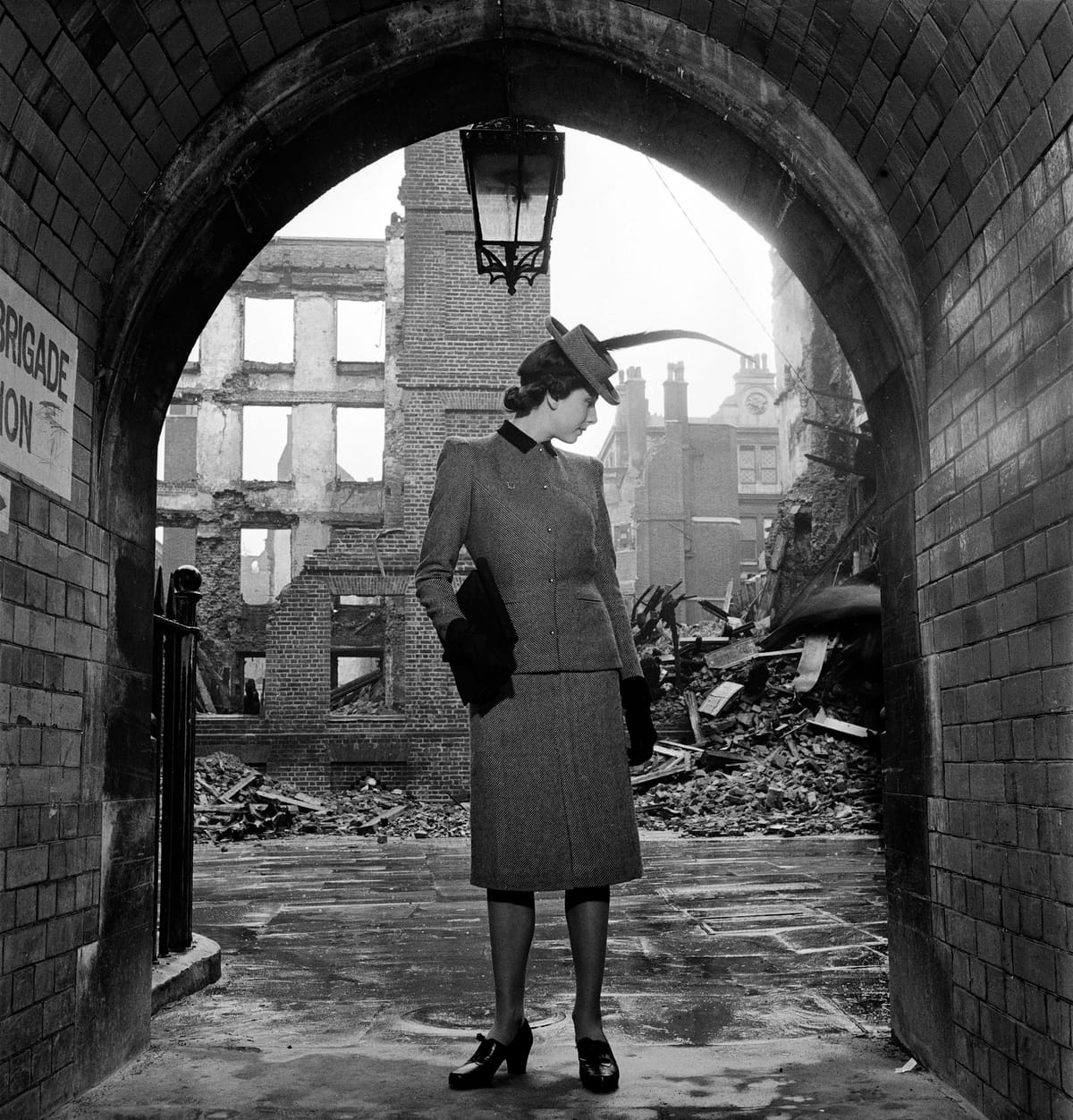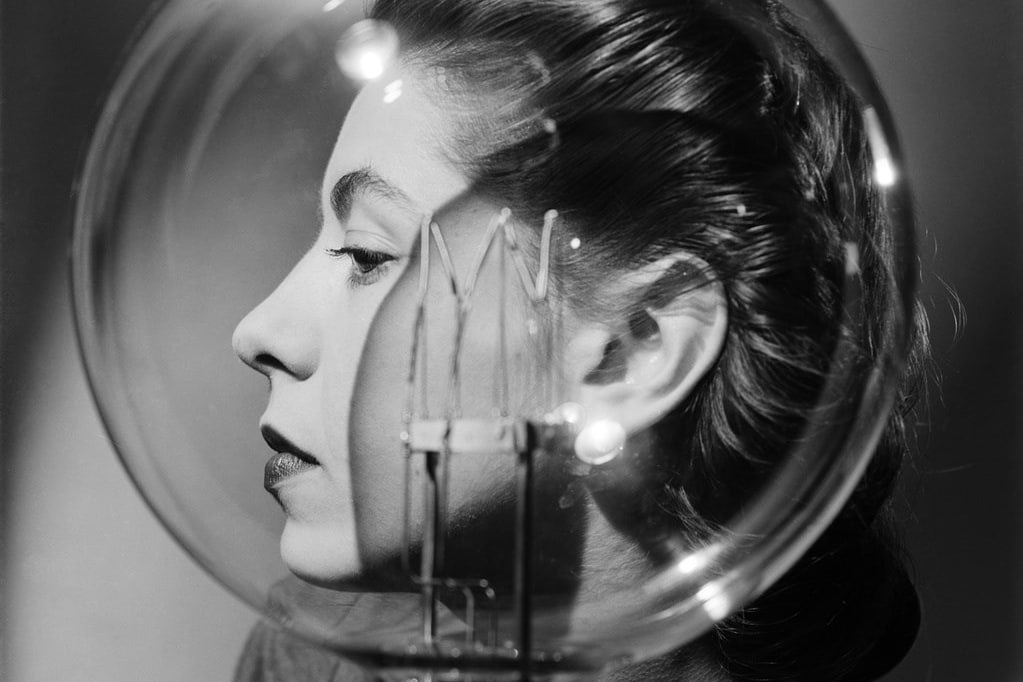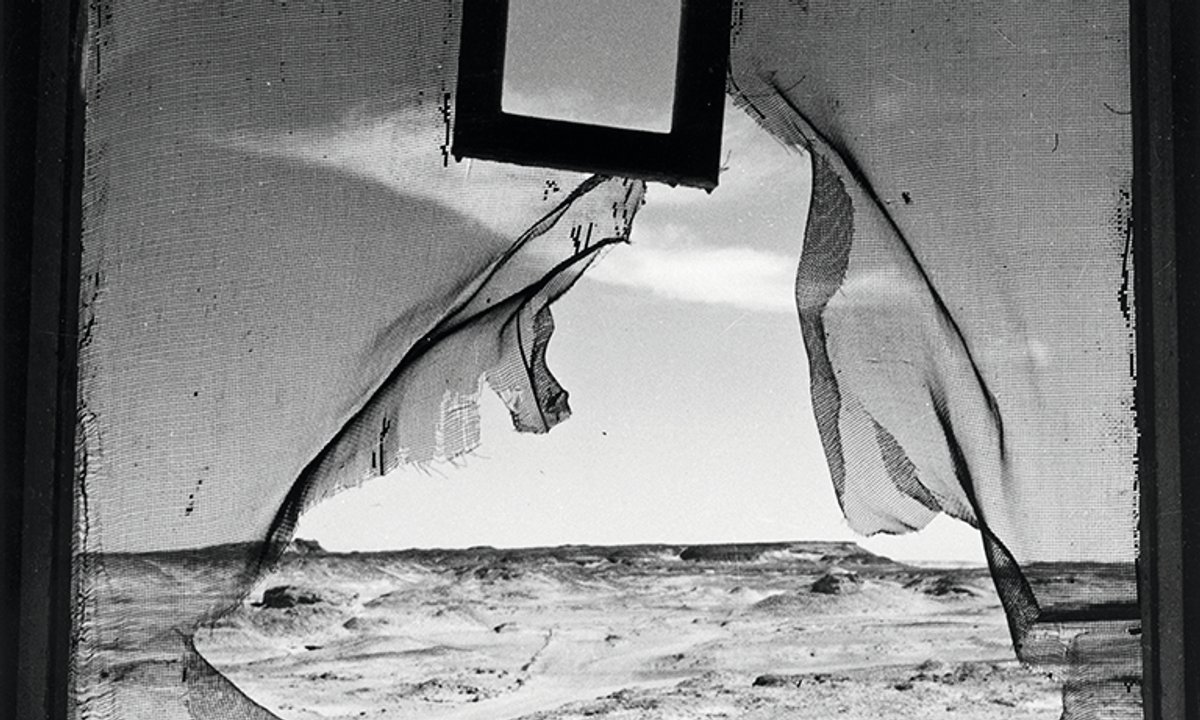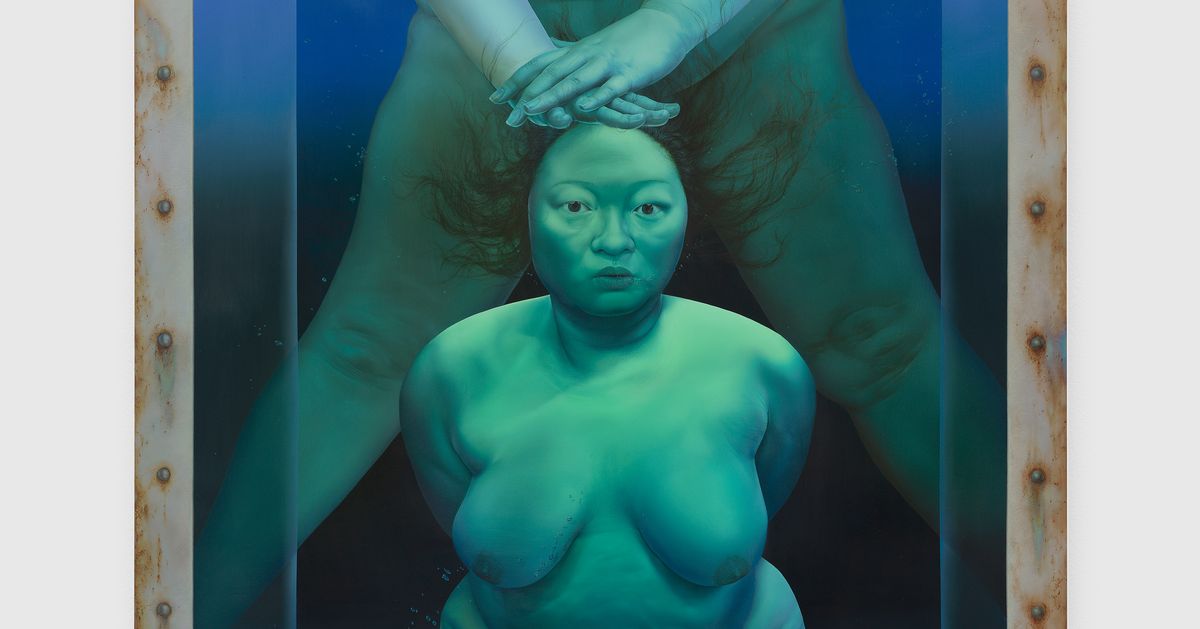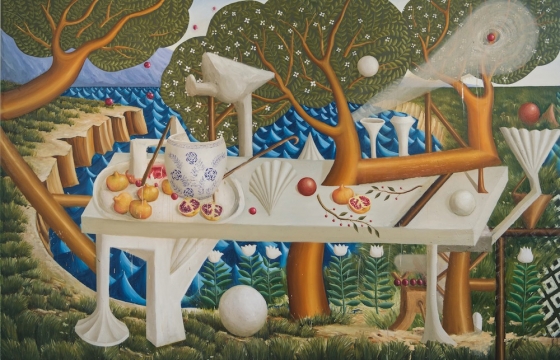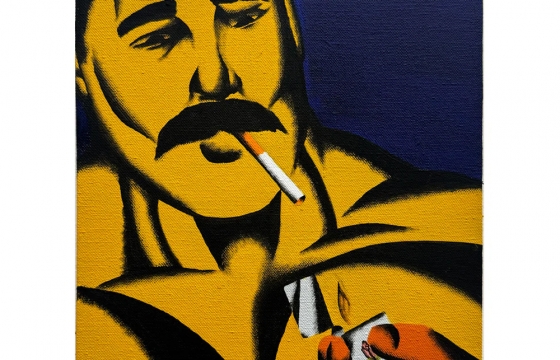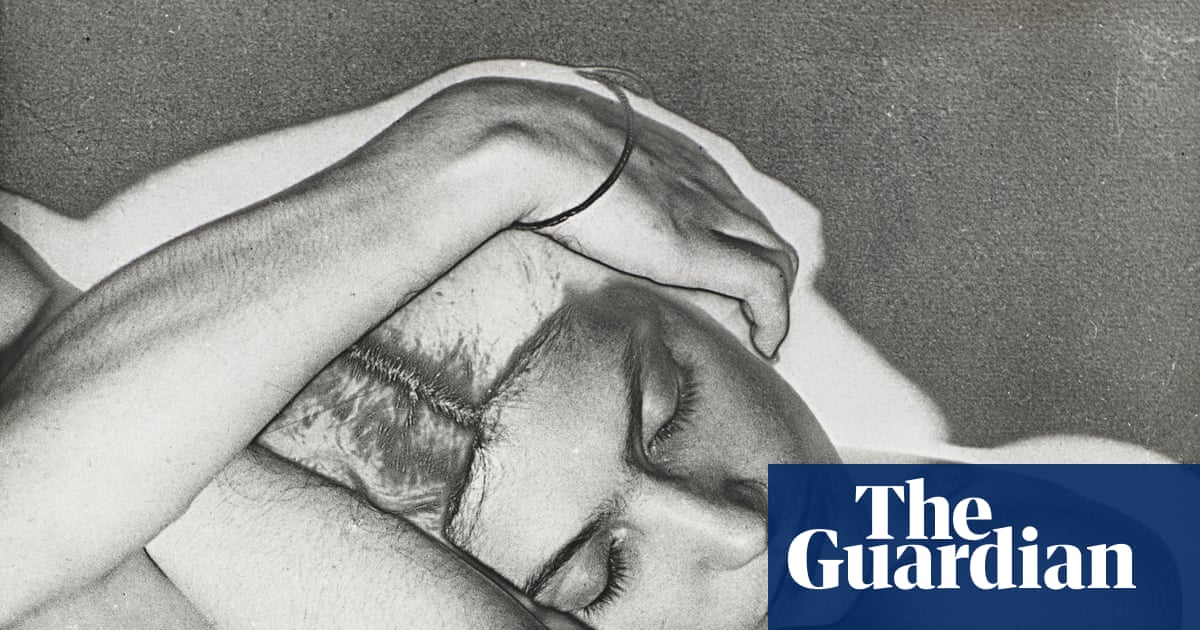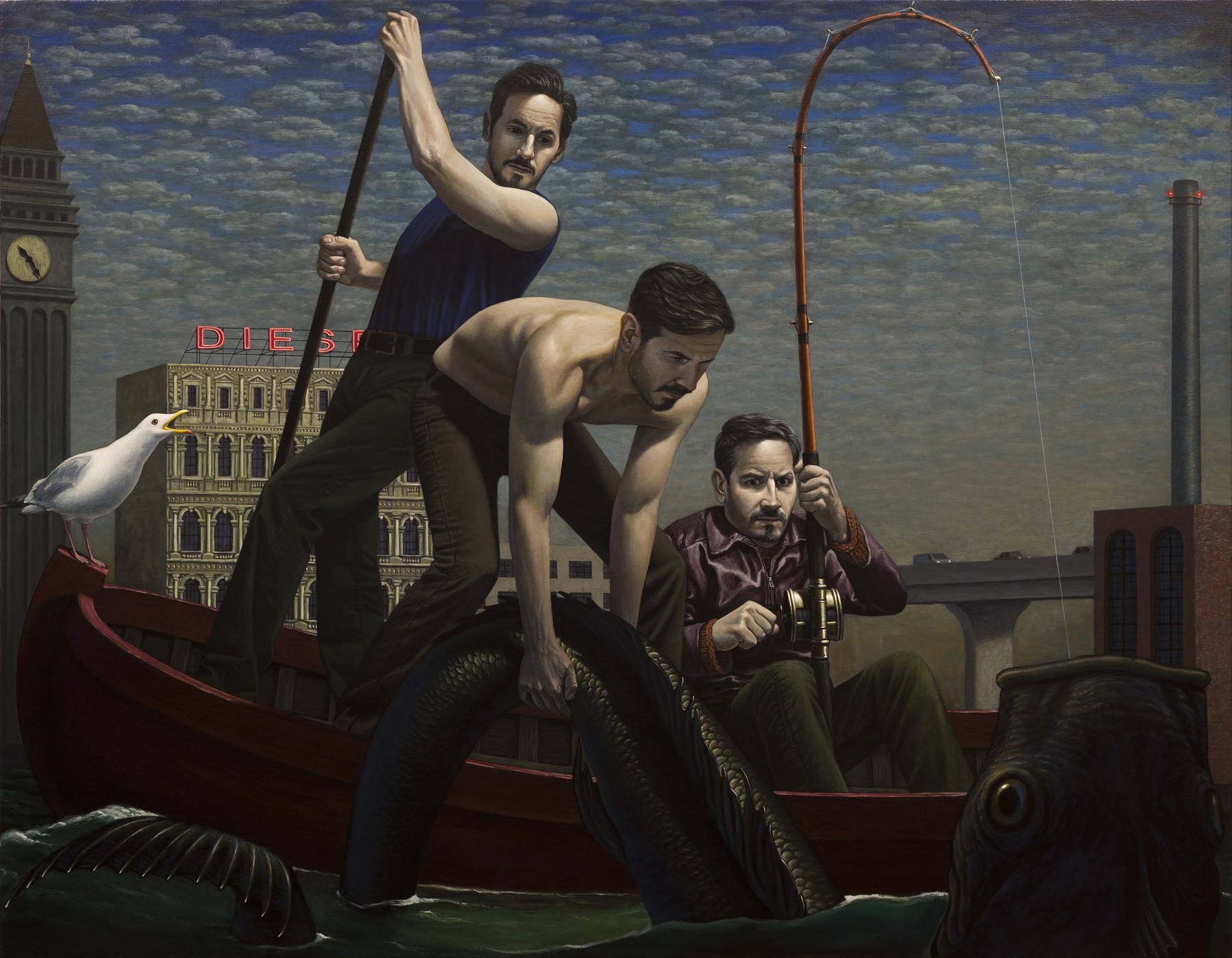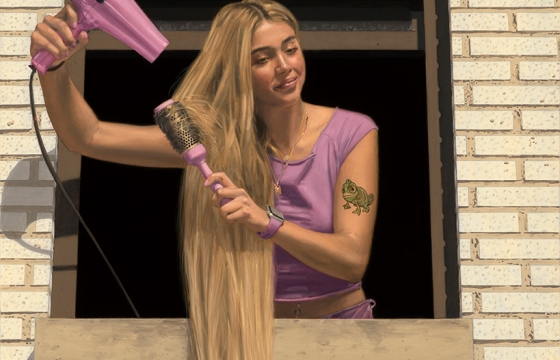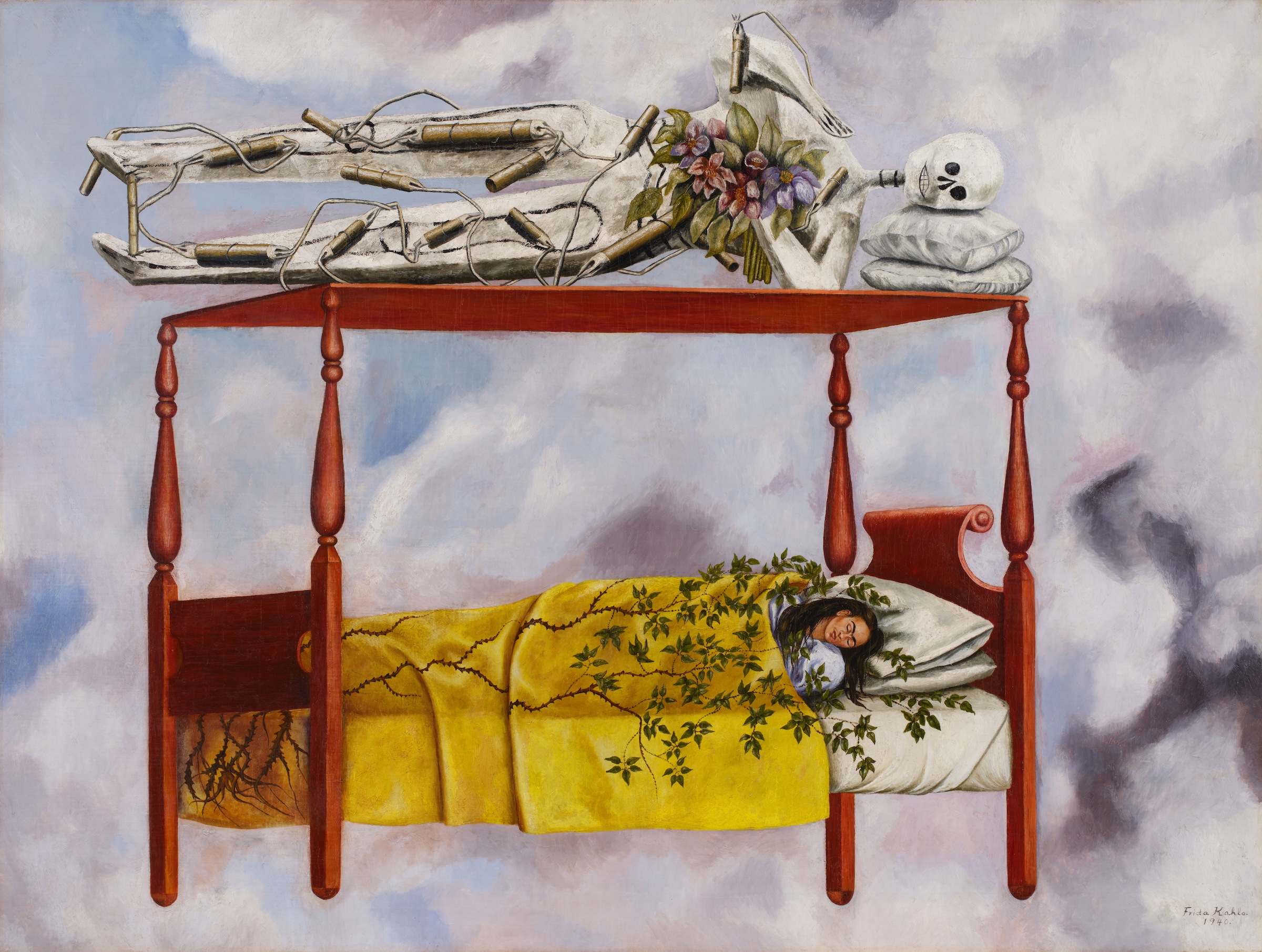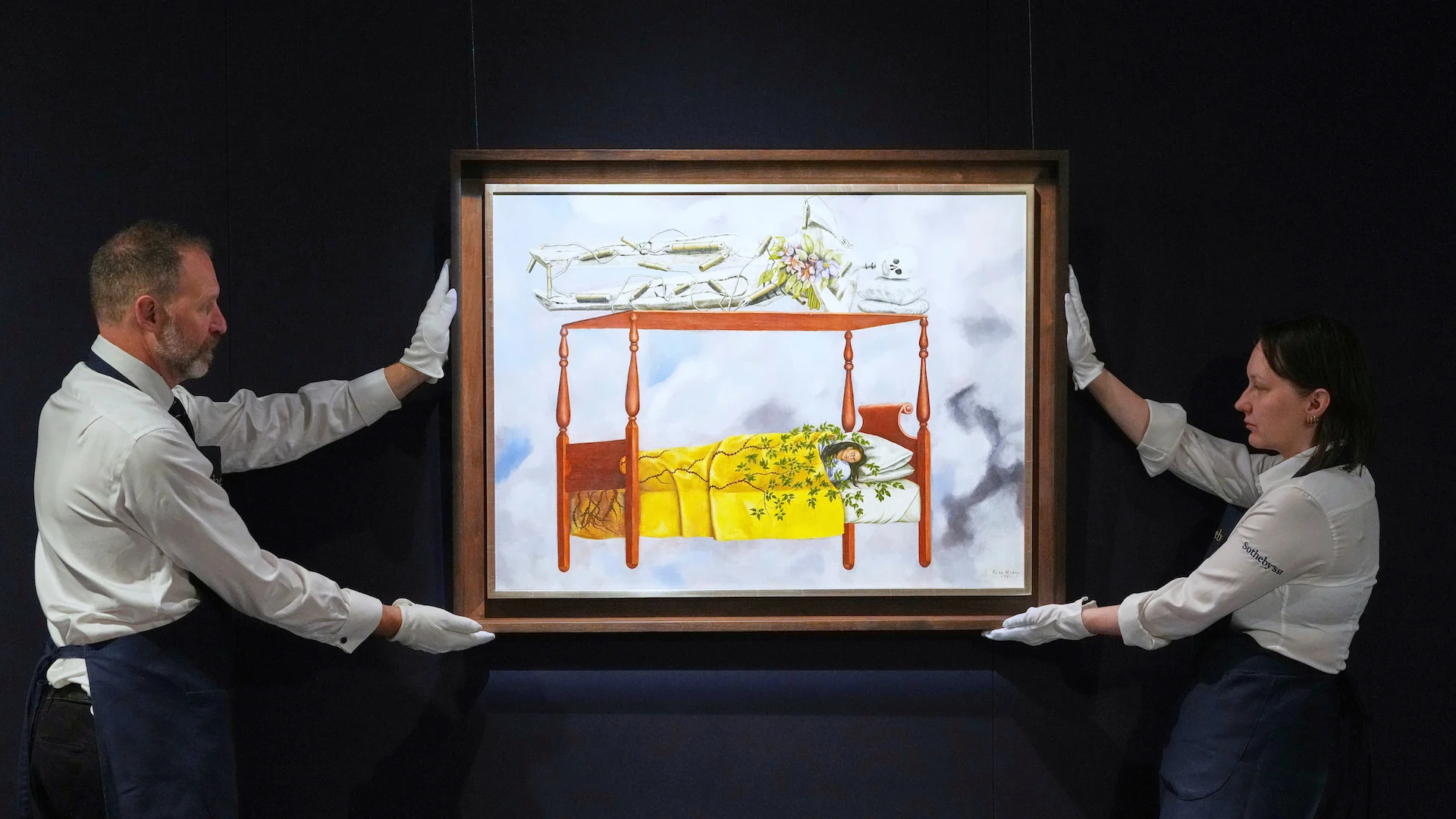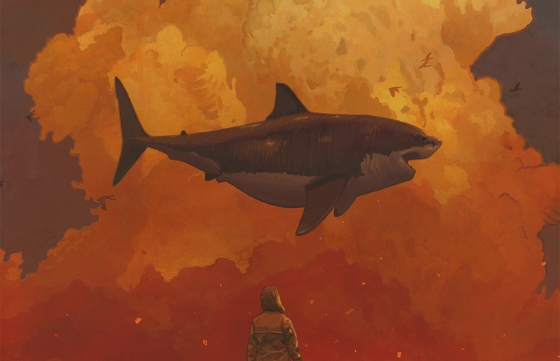#surrealism
#surrealism
[ follow ]
#illustration #photography #street-art #contemporary-art #contemporary-painting #frida-kahlo #lee-miller #man-ray
fromOregon ArtsWatch * Arts & Culture News
2 days agoFilmWatch Weekly: 'The Secret Agent,' 'Jay Kelly,' 'Dust Bunny' and more * Oregon ArtsWatch
The corpse of a man killed trying to rob the place days earlier lies in the dirt nearby, covered by a hunk of cardboard. The local cops roll up before Armando can depart and harass him, presumably because he's driving a Beetle and has a beard. Armando keeps his cool and continues on his way, Chicago's "If You Leave Me Now" coming out his car's speakers as he arrives in the northeastern city of Recife,
Film
fromJuxtapoz
3 weeks agoJuxtapoz Magazine - Stickymonger: "See-Through" @ Nanzuka Undergroud, Tokyo
The term reflects her unique method of applying spray paint, bringing depth, complexity, and a painterly sensibility to her work. This exhibition presents 21 new spray paintings based on the theme "See-Through," delicately depicting moments where humor and introspection intersect through the coalescence of everyday objects and surreal scenes. The word "See-Through" harbors a mysterious meaning that serves to stimulate Stickymonger's imagination.
Arts
fromdesignyoutrust.com
3 weeks agoIllustrator Paul Blow Creates Simplelooking but Idearich Artworks, With Restrained Palettes and Clean Lines
This Artist Used A Sketchbook And Pen To Create Amazing Detailed Drawings Hauntingly Beautiful Ophelia Paintings Seduce You From Beneath The Water's Surface Irish Street Artist Creates Anaglyph Mural Of Edward Bruce, The Last High King Of Ireland Hyper-Realistic Drawings By Bella McGoldrick Frederic Edwin Church's Beautiful Pantings of Icebergs Between Labrador and Greenland, 1859 1861 Street Artist Makes Mario Mosaics Where He Cosplays As Different Characters Artist Creates Stunning Illustrations Depicting The Aftermath Of Hurricane Helene
Arts
fromThe Art Newspaper - International art news and events
3 weeks agoRecord-breaking $54.6m Frida Kahlo powers Sotheby's sold-out triple-header sale in New York
The night started with a sale of 13 lots from the estate of the late Chicagoan collectors Cindy and Jay Pritzker that surpassed Sotheby's high estimate of $88.5.m to bring in $91.7m ($109.5m with fees). A stellar group of 24 works by Surrealist heavy-hitters from an unnamed collection (marketed as "Exquisite Corpus") followed, generating $81.9m ($98m with fees), squarely within the group's estimate range ($66.7m-$98.9m).
Arts
fromwww.theguardian.com
3 weeks agoThe Saragossa Manuscript review cult Polish period-costume comedy is outrageous head-spinner
It is a surrealist film whose surrealism resides not merely in the bizarre parched landscape of the Sierra Morena mountain range with its bleached skulls, hanged bandits, crows and mysterious inns in which seductive encounters are to be had, but also simply in the bewildering juxtaposition of individual tales and anecdotes, stories which grow out of each other. The surrealist effect (and the comedy) is in the jolt from one micro-narrative to the other, and the realisation that the overall story is thwarted and undermined.
Film
Arts
fromThe Art Newspaper - International art news and events
3 weeks agoIn his own words: Antwerp museum uses AI to recreate Magritte's voice
An AI recreation of Magritte's 1938 spoken presentation anchors a KMSKA exhibition exploring his titles, body, collages, and word-image relationships across 100+ works.
fromColossal
1 month agoDream Worlds Emerge in Yuichi Hirako's Larger-than-Life Domestic Spaces
In the uncanny world of Yuichi Hirako, the relationship between humans, nature, and the built environment plays out in vibrant color and unique proportions. The Tokyo-based artist creates large-scale sculptures, paintings, and installations that explore coexistence, often through compositions that appear crowded with domestic objects, food, cats, and figures whose faces are obscured by cartoonish head coverings shaped like trees or antlers.
Arts
fromdesignyoutrust.com
1 month agoPaper, Flesh, and Urban Myth: Dissecting the Darkly Surreal Collages of John Vochatzer
Chinese Propaganda Posters From The Cultural Revolution Ages, 1960s-1970s Artist Makes These Really Useful Work Meeting Achievement Badges - Try To Collect Them All Ethereal Cut Paper Illustrations of Women In Water By Sonia Alins "Explore The Lost Land": The Superb Digital Concept Artworks By Bastien Grivet Darth Vader and the Underworld: Kevin Cassidy's Brutal and Infernal Demons Artist Friend Spent Over 500 Hours On These Paintings Capturing The Suffering
Arts
fromdesignyoutrust.com
1 month ago"Disney Dreams Gone Dark": Stunning Pop Culture Illustrations and Comics of Brecht Vandenbroucke
Brecht Vandenbroucke is a Belgian illustrator, painter, comic author, and filmmaker born in 1986 in Veurne, who studied illustration at Sint-Lukas University College of Art and Design in Brussels and now lives in Antwerp, where his satirical works critique modern society through vibrant, pop culture-infused visuals. His style blends surrealism, Disney-inspired whimsy, and influences from artists like Mark Beyer, ATAK, Charlotte Solomon, and Glen Baxter, resulting in dense compositions filled with long-limbed creatures, logos, and chaotic scenes that mix humor with underlying darkness.
Arts
fromstupidDOPE | Est. 2008
1 month agoLee Madgwick's Surreal Structures Capture the Beauty and Unease of Isolation | stupidDOPE | Est. 2008
Under skies heavy with storm-gray clouds, the architectural ruins in Lee Madgwick's paintings seem to exist somewhere between reality and imagination. His works are not just landscapes but psychological portraits-of solitude, fragility, and the strange poetry found in decay. With a style that merges surrealism and realism in equal measure, Madgwick transforms the familiar English countryside into a dreamlike world that's quietly charged with tension.
Arts
fromdesignyoutrust.com
2 months ago"A Fever for You": the Superb Sureal and Melancholic Paintings by Zhiyong Jing
Zhiyong Jing is a painter living and working in Beijing, China, well known for his surreal dreamlike artworks that explore themes of hope, isolation, and absurdity. He earned a BFA in oil painting from the Tianjin Academy of Fine Arts in 2005 and credits his education with shaping his signature style, which combines childlike simplicity with adult complexity and wit. Jing's paintings often feature cinematic scenes filled with haunting figures, ghost-like shapes, and paradoxical imagery, drawing heavily from personal dreams, memories, and emotional experiences.
Arts
Film
fromIndieWire
2 months agoRose Byrne and Mary Bronstein Break Down 'If I Had Legs I'd Kick You': The Title, 'Uncut Gems' Comparisons, and the Film's Own Many Breakdowns
Rose Byrne delivers a career-best performance as a self-destructive therapist and mother spiraling amid her daughter's illness and a surreal domestic breakdown.
fromBOOOOOOOM!
2 months ago"Saccharine Idyll" by Artist Martina Grlic
My entire education, everything I had ever been told or had told myself, insisted that the production was never meant to be improvised: I was supposed to have a script, and had mislaid it. I was supposed to hear cues, and no longer did. I was meant to know the plot, but all I knew was what I saw: flash pictures in variable sequence, images with no 'meaning' beyond their temporary arrangement, not a movie but a cutting-room experience.
Arts
fromwww.theguardian.com
2 months agoI Gusti Ayu Kadek Murniasih review a vivid testament to a life lived hornily
Murni or I Gusti Ayu Kadek Murniasih, to go by her full name was a Balinese artist who shrugged off all the norms and expectations that life chucked at her and instead made art with total abandon. By the time she died aged 39 in 2006, taken by ovarian cancer, she'd left behind a body of ultra-simple, mega-bold, hyper-colourful painting that functions as a testament to a life lived honestly, independently and very, very hornily.
Arts
fromTime Out New York
2 months agoFirst look: This surrealist '60s exhibit at The Whitney feels startlingly relevant today
It's hard to imagine today when we're constantly barraged with algorithm-selected content in the palm of our hands, but until the 1960s, the concept of turning on the TV and seeing images of Count Dracula one second and then the Vietnam War the next moment was incomprehensible. For the first time, people were seeing images of political assassinations, the oppression of protests and the carnage of war in their living rooms.
Arts
fromBOOOOOOOM!
2 months ago"The House That My Mother Built" by Artist Yeon Yeoin
A selection of work from artist Yeon Yeoin's latest solo exhibition with DIA contemporary. Born and based in Seoul, Yeon majored in Psychology and Creative Visual Arts at Sogang University. Her work is an exploration of emotion through surreal imagery. Using a wide range of techniques, from pen and ink to digital painting, Yeon creates a unique world inspired by her personal experiences and filled with original characters that reflect difficult-to-define emotional states.
Arts
Film
fromIndieWire
3 months ago'Sacrifice' Review: Cult Leader Anya Taylor-Joy Wants to Throw the Rich into a Volcano in Romain Gavras' Wild Satire of Performative Environmentalism
Sacrifice is a hyper-stylized, messy comedy-fable that satirizes elite performative activism while probing truth, performance, and death as a cleansing ritual.
fromMission Local
3 months agoThe Mechanix at ZBelow is a rollercoaster
Sara Toby Moore's "The Mechanix," a self-described "science fiction-magical realism-human cartoon" show, takes place on "a normal day at a seaside amusement pier." The show includes interdimensional travel, anthropomorphic animals, the nature of free will, and an extended riff on "The Wizard of OZ." Through it all, one would be forgiven for occasionally asking what one thing has to do with the other. It's a question that never gets answered.
Arts
Arts
fromHi-Fructose Magazine - The New Contemporary Art Magazine
3 months agoLola Gil Distorts Memories With Her Glass Managerie - Hi-Fructose Magazine
Gil uses narrative escapism and nostalgia to transform personal vulnerability and therapeutic storytelling into paintings that open doors and provoke reflection.
Graphic design
fromItsnicethat
3 months ago"Cmd+z doesn't exist on paper": Pat Thomas' drawings are unapologetic and filled with feeling
Pat Thomas uses hand-drawn crayon illustrations to transform domestic objects into warm, kaleidoscopic scenes that evoke nostalgia, intimacy, and communal tenderness.
fromThe Atlantic
3 months agoMaybe a New Melania Magazine Cover Will Give Trump What He's Been Seeking
"There appeared to be a kind of vortex in the middle of the table in the meeting room; it sizzled and gave off sparks. Some paper clips flew into it and disappeared. "Her? Who?" "Melania Trump!" the voice yelled. "The future first lady!" "Future?" "First lady?" "There's no time to explain! Just put her on it! Put her on as many of them as you can! Trust us, you don't want to know what they'll do to get a cover!
US politics
fromTime Out New York
3 months agoThis new Whitney exhibit features '60s surrealism from Yayoi Kusama, Judy Chicago and Jasper Johns
The show features painting, sculpture, photography, film and assemblage, tracing how artists working in cities like Los Angeles, Chicago, Houston and New York grappled with identity, sexuality, race and power in ways often overlooked in canonical art histories. Though the women's liberation movement didn't enter wider public consciousness until the early 1970s, Sixties Surreal showcases how women artists were creating an early feminist aesthetic and imagining new fields of possibility for themselves and their work.
Arts
[ Load more ]






